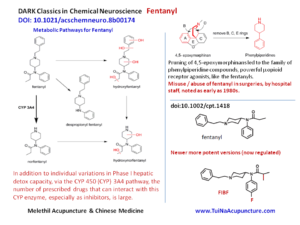The Fentanyl Fiasco
Almost 50 years ago, the fentanyls (4-anilidopiperidines) were recognized by surgeons as powerful opioid analgesics.
Their ability to cross the blood brain barrier better than morphine, higher affinity for binding with the endogenous mu opioid receptors, rapid onset and short duration of action, in addition to lower manufacturing costs, were appreciated. Their use for self medication among medical doctors, i.e., misuse and abuse, was recognized by the 1980s.
However, no action was taken till about a decade ago, to clarify the harms and benefits associated with this easily synthesized opioid drug. By then, our adversaries had recognized its capitalist potential, i.e., very high revenue potential for very low (synthesis) costs, with disastrous consequences for our country.
It is rather unfortunate that none of the cognizant National Institutes of Health charged with protecting public health, including NIDA, provided an early warning of what was coming. The evidence before us, i.e., no formal recognition of the downstream consequences on public health, associated with the widespread and decades long unscientific and rash prescriptions of powerful opioids, was a failure of public service.
Specifically, the early recognition of fentanyls’ addictive potential, even among medical doctors, followed regulatory inaction for decades.
